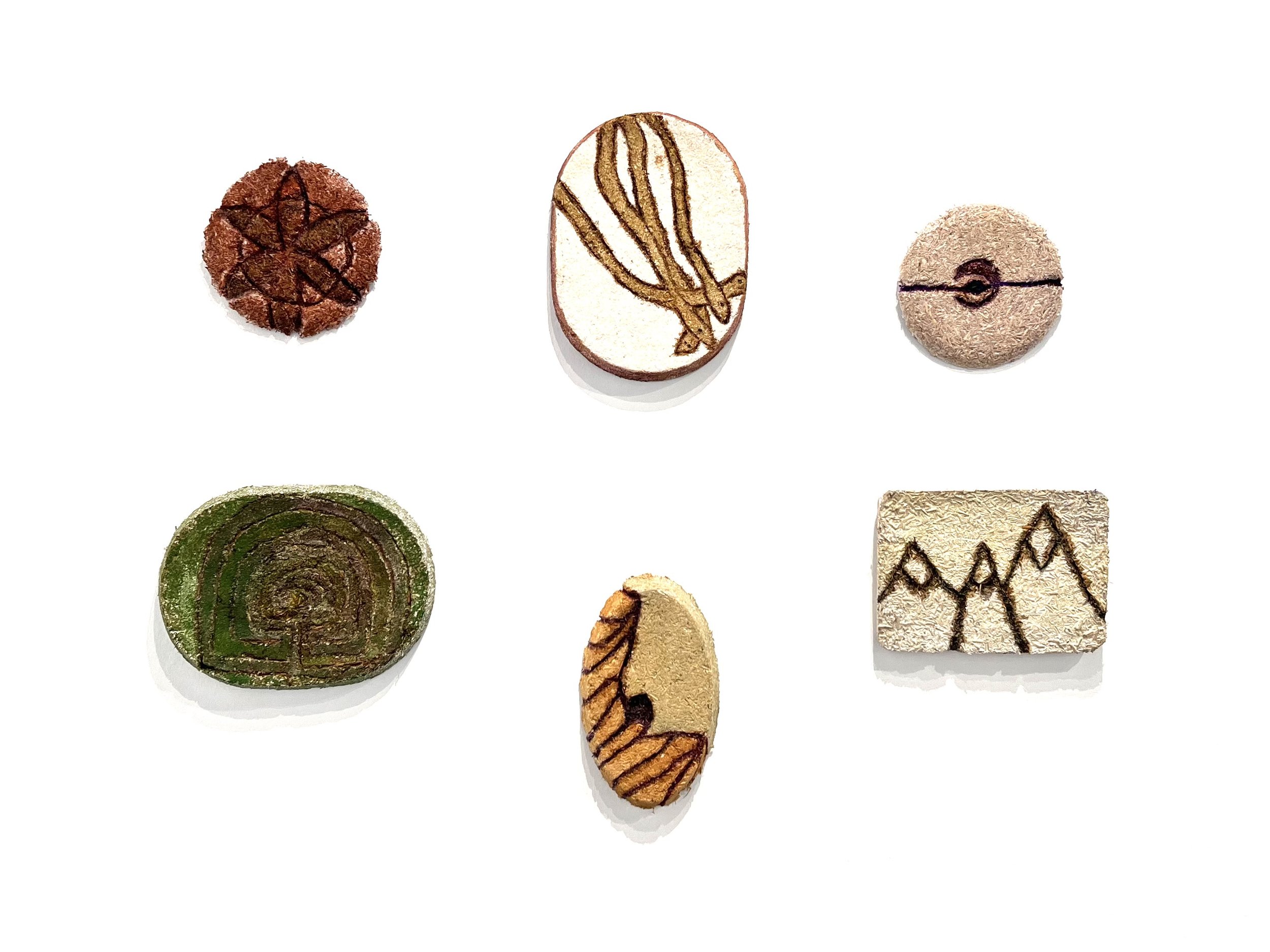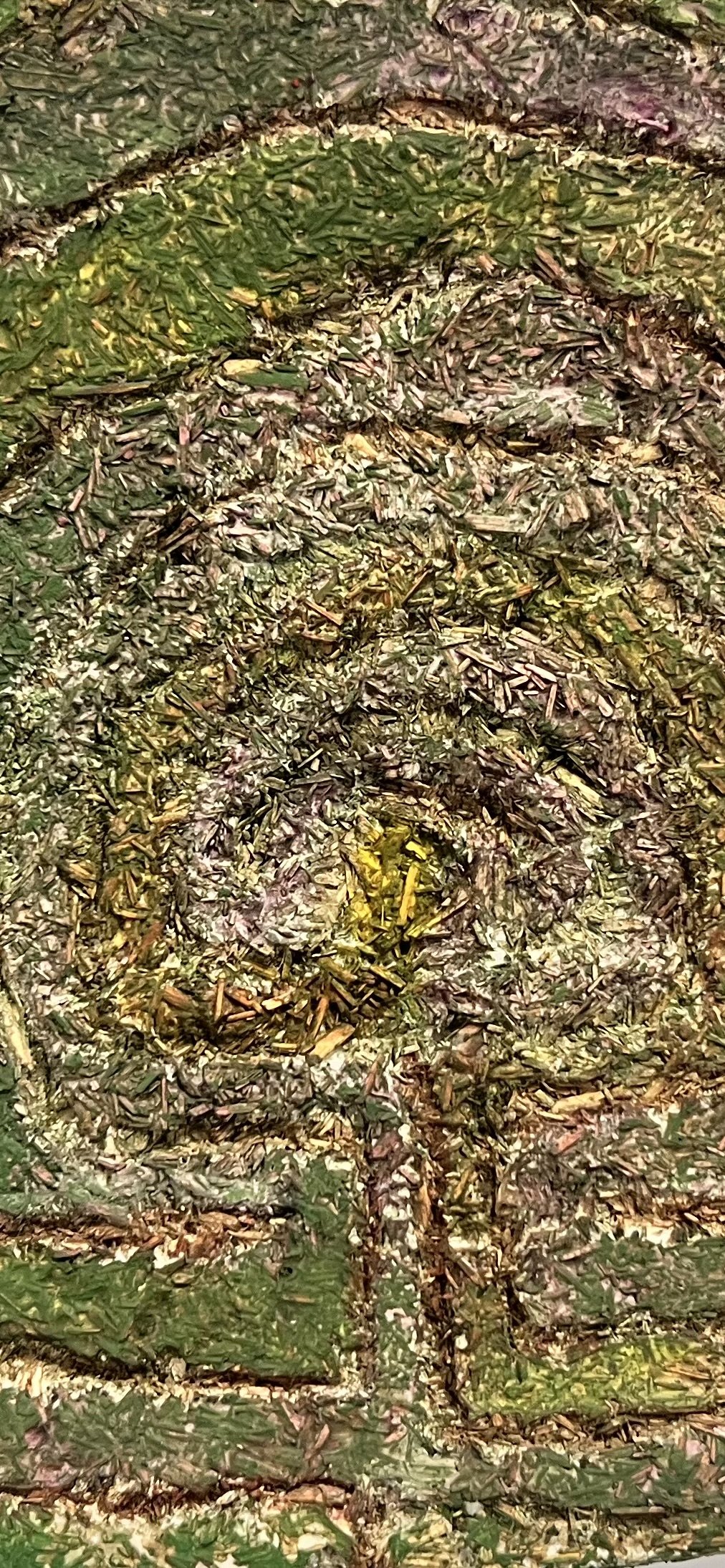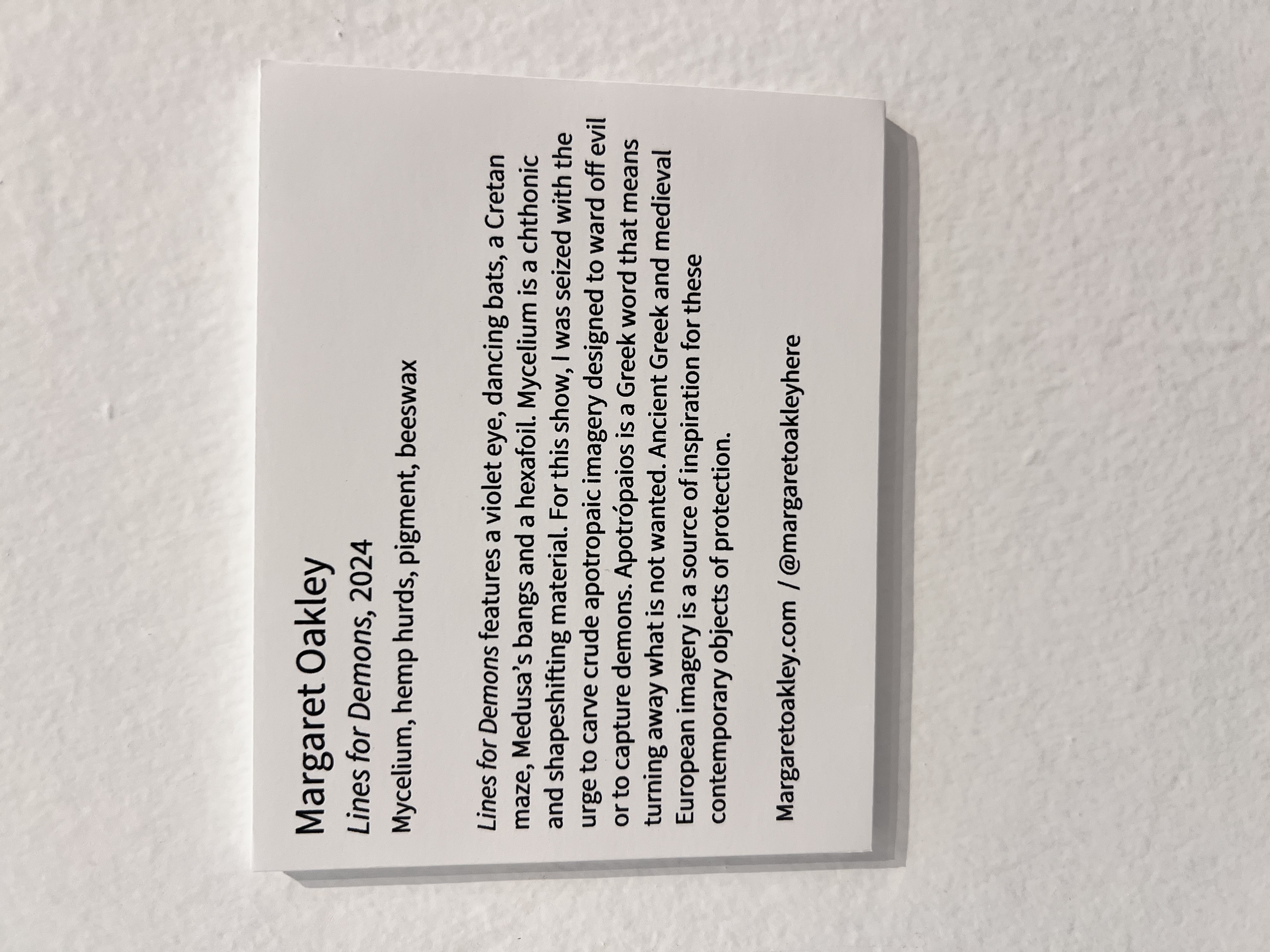Lines for Demons
Lines for Demons, Whiplash, October 2024, Airport Artist Gallery, Santa Monica.
This group show invitation asked us to make work in response to the whiplash-type feeling of constant change occurring in our society in 2024. In response, I was seized with the urge to carve crude apotropaic imagery designed to ward off evil or to capture demons. Apotrópaios is a Greek word that means turning away what is not wanted. Ancient Greek and medieval European imagery is a source of inspiration for these contemporary objects of protection. The lines and shapes in these works are inspired by ancient Greek and medieval European markings and symbols. A violet eye, dancing bats, a Cretan maze, a hexafoil or daisy chain, and Medusa’s bangs are points of inspiration for the specific imagery that makes up the larger constellation of Lines for Demons.
A variety of strategies were used in the practice of apotropaic mark making across time and cultures. In ancient Greece, certain entrances or vessels were decorated with fearful imagery, such as the head of a gorgon, to ward off bad spirits. In medieval times, a hexafoil or daisy chain was marked into stone or wood beams in churches and near the windows and doorways of homes to trap demonic spirits into the geometric lines of the design.
Mycelium as an art material signifies transformational processes of life and death. Mycelium runs underground throughout the earth as a fungal hyphae network that transports nutrients, water, and even types of information to plants, such as warnings about potential threats like pests or pathogens, which might be demons in the world of plants. Mushrooms are the fruiting bodies of the mycelium. As a substrate, it can be guided into an infinitude of forms. It grows itself, with the help of flour and water, into a solid object. Mycelium can create strong and durable materials that are used increasingly in architectural and design materials. It’s a nontoxic and biodegradable material. Certain types of mycelia help with the decomposition of difficult to disappear inorganic materials we humans have invented in the 21st century, such as petroleum based plastics, which could be considered a demonic detritus. I think of mycelium as both primeval AND a new and exciting art material. It’s surfaced above ground for a time and collaborated with me to make these forms. The works for this show have been heated for an extended period of time and hardened off into an eternal hydrophobic rest. In making this work that protects from or draws in demons, the demons themselves become an imagined audience for the work. The art objects become artifacts of demonology. In making the work, I wonder what are these demons, where do they come from, and what messages might they have for me? Historically, demonic forces are imagined as independent entities out in the world that attack from the outside and warrant protection against. Contemporary psychological attitudes refer to the demons that live inside of us. There are demonic aspects of the self and if we face them, they offer us opportunities for understanding and transformation.
-Margaret Oakley, Artist Statement October 2024











